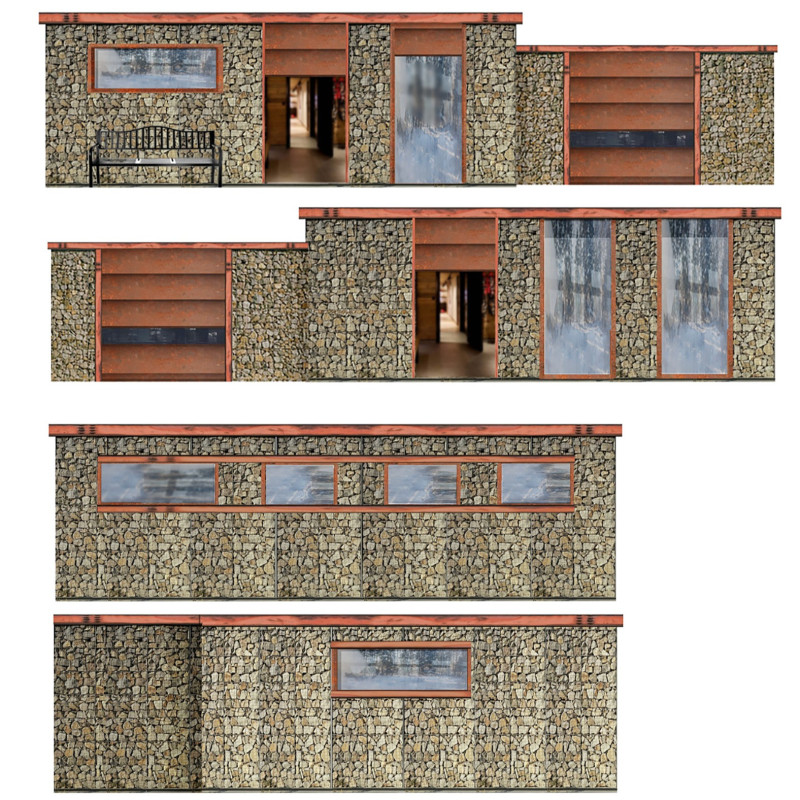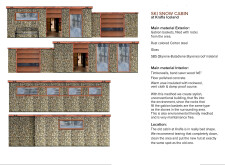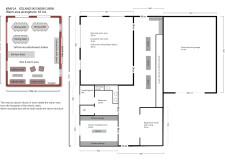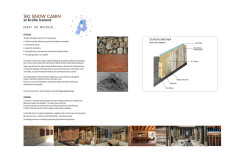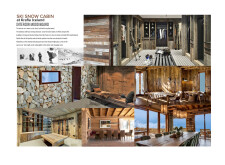5 key facts about this project
## Overview
The Ski Snow Cabin is situated in Krafla, Iceland, a region noted for its geothermal features and challenging weather conditions. The project aims to modernize an existing cabin while harmonizing with the rugged landscape, focusing on resilience and sustainability. Key design considerations include the strategic selection of materials and structural integrity, creating a space that serves both sport enthusiasts and visitors.
## Material Strategy
### Exterior Composition
The cabin's exterior prominently features gabion baskets constructed with local stones, enhancing both structural stability and aesthetic integration with the surrounding geography. Rust-colored corten steel is utilized for framing, providing durability against the region's harsh elements while developing a protective patina over time. Extensive glazing ensures abundant natural light within the space, reinforcing the connection between indoor and outdoor environments. A single-sided SBS roofing material offers significant weather resistance essential for the cabin's longevity.
### Interior Finishes
The interior incorporates band-sawn wood for thick walls, imparting a warm, rustic quality that contributes to user comfort. Polished concrete flooring offers a durable and low-maintenance solution suitable for high-traffic use. Rockwool insulation enhances energy efficiency and thermal comfort, addressing temperature regulation effectively. Additionally, elements like vent cloth and damp proof courses are integrated to manage moisture and support a healthy indoor climate.
## Functional Layout
The architectural design features a well-considered layout that allocates specific zones for various activities. A warm area of 63 m² is designated for relaxation and dining, complemented by a self-service refreshment station to promote user convenience. The strategic placement of robust sofas invites visitors to unwind.
Multi-functional spaces are also prioritized, with designated areas for equipment storage, tuning, and changing, thereby maximizing utility and catering to the needs of diverse users. This adaptable approach supports both preparation and relaxation, aligning with the project’s intent to enhance user experience while maintaining operational efficiency.


